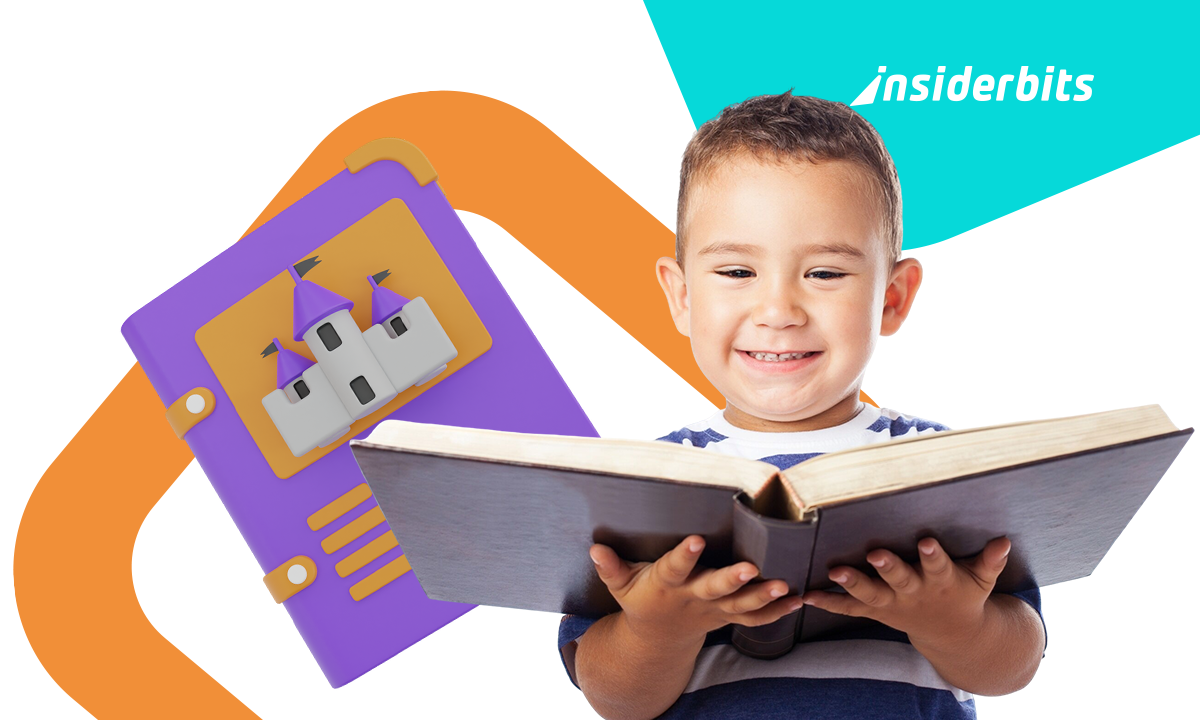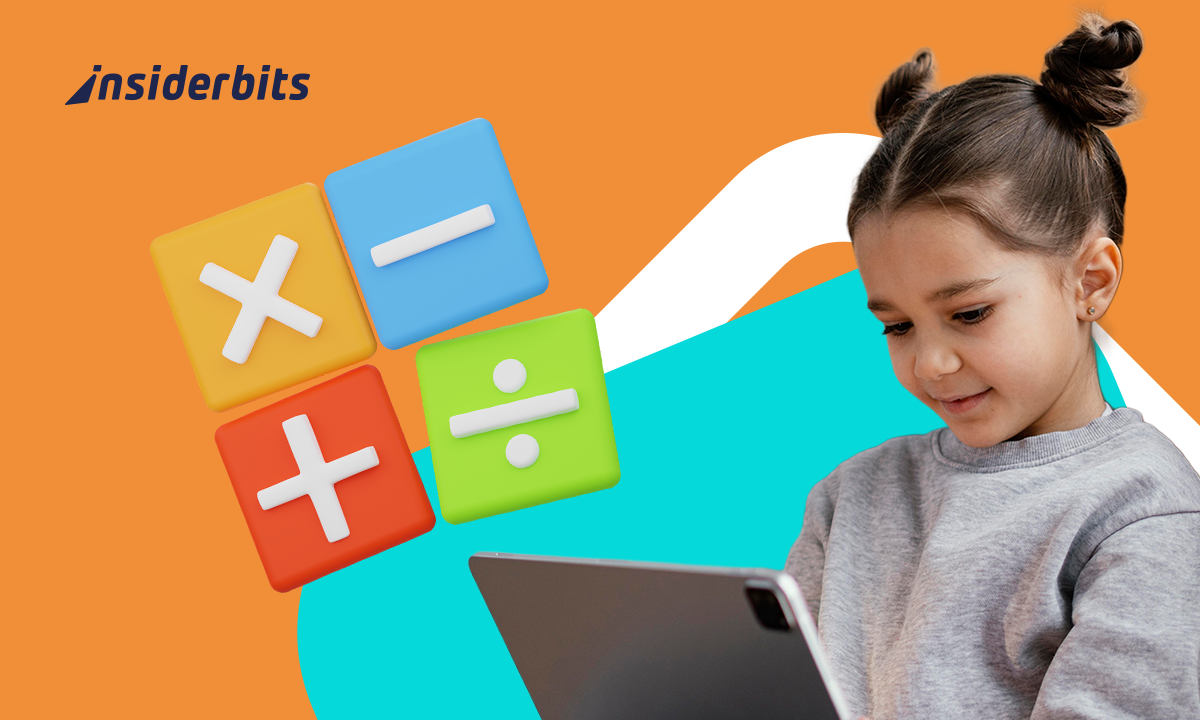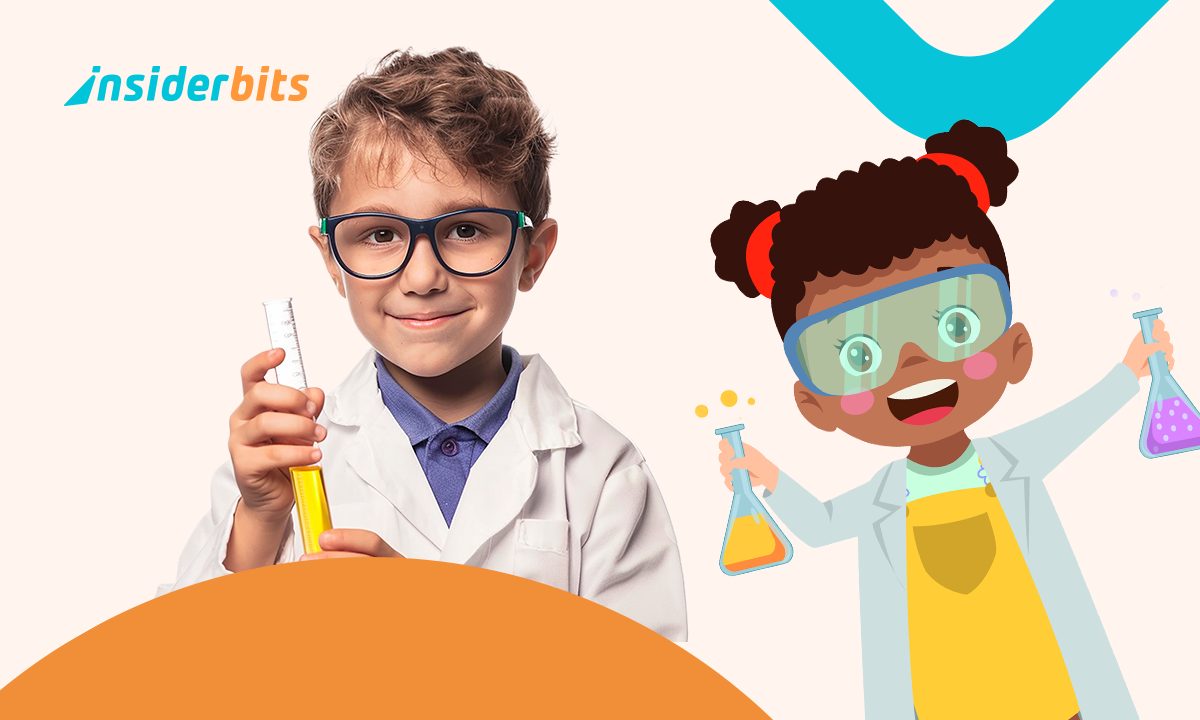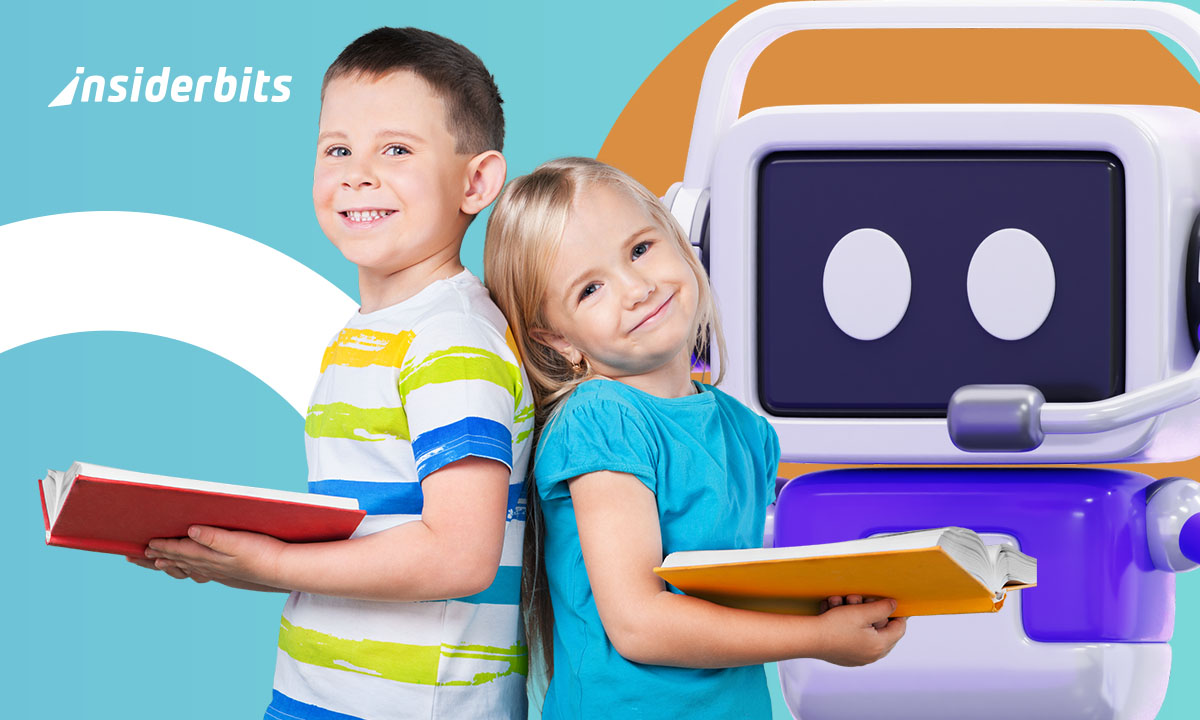What truly marks the beginning of a child’s literacy journey is kindergarten reading. This phase is so important for child development that anything that helps is not too much. We all know that between ages 4 and 6 that most children begin decoding simple sentences, and expanding their vocabulary, and that requires tools that blend different stimuli.
So, with structured lessons and age-appropriate feedback, the right app can guide them through those first milestones with confidence and joy. This Insiderbits guide highlights the best kindergarten reading apps, explaining how they work, what skills they teach, the best way to use them, and how parents can use them to create a strong daily routine.
- Apps for Literacy: Boosting Reading and Writing Skills
- Best Learn-to-Read Games Your Child Will Love!
- Apps zum Entdecken inspirierender Bücher
Kindergarten reading: best apps to help your child
There are many reading apps that help people with languages or even improving their mother tongues, but we can also find some options for young learners.
Since children’s learning is different, kindergarten reading apps must combine play and learning without overwhelming the child.
In this article below, you will find some apps such as HOMER Learn & Grow, which stands out for its personalization, adapting to the user’s interests and skill level.
As a child progresses, the app adjusts difficulty and introduces new content that keeps them engaged without creating pressure.
Meanwhile, Starfall offers a simple, visual interface with phonics-focused lessons that encourage kids to sound out words and interact with animations.
Further, you will understand better about the best apps for kindergarten reading. Choosing one depends on your child’s learning style, but all three offer structured content and instant feedback.
The skills kids learn in their first reading year
During kindergarten, children move from letter recognition to blending sounds into complete words. That said, the skills needed during this period need to reinforce learning the first words.
Also, kids at this age learn how print moves from left to right, how punctuation changes tone, and how to associate text with meaning.
Some often reinforce each new concept with matching games, drag-and-drop word builders, and listen-and-repeat exercises, allowing children to internalize what they’re seeing and hearing while interacting actively.
With the right use, by the end of the year, many kindergartners can identify beginning and ending sounds, match rhyming words, and read predictable sentence structures on their own.
Best app features for ages 4 to 6
HOMER: personalized reading with visual and audio cues
As we previously mentioned, HOMER (iOS/Android) uses vivid animations in its lessons and word highlighting to help kids follow along as they hear each sound.
In addition, this app uses synchronization between text and audio to build strong associations and reinforces recognition through multiple senses.
Each activity in HOMER lasts just a few minutes, making it ideal for kids, since we are working with short attention spans.
Lessons are designed to progress naturally, with visual reinforcements and simple cues that repeat gently when a child makes a mistake.
The tone used in this app mimics that of a supportive adult, helping young learners feel safe as they practice reading skills like blending sounds and recognizing high-frequency words.
The app’s structure makes repetition feel like play, offering a comforting routine that gradually expands vocabulary and reading fluency.
3.5/5
Reading Eggs: fast feedback and engaging minigames
Reading Eggs (iOS/Android) relies heavily on interactive animations and immediate response to user input.
If a child selects an incorrect word or sound, for example, the app quickly corrects the action with an explanation and rewards persistence with fun graphics or short songs.
Also, the app features animated characters and story-based activities that provide consistent visual stimulation, making abstract language concepts feel engaging.
With friendly narration and in-lesson mini-games, Reading Eggs keeps motivation high while ensuring that every mistake becomes a learning opportunity.
4/5
Starfall: Repetition and Sound Recognition in Action
Lastly, we are going to talk about Starfall (iOS/Android). This app uses simplicity to its advantage, with a clear interface that supports visual learning by emphasizing any reading structure through colorful scenes and animations timed with the narrator’s voice.
The app reinforces phonics with frequent repetition, letting children hear the same sound patterns multiple times across different exercises.
In addition, the audio guidance within the game is deliberate and clear, giving young users enough time to absorb the sound-letter connections before moving on.
This approach benefits learners who need slower transitions and consistent repetition, especially in the early stages of reading development.
4.2/5
Phonics, sight words, and interactive books explained
Well, this can look overwhelming at first, but we will try to make it clear for you.
First of all, phonics teaches the relationship between letters and their sounds, giving children tools to decode unfamiliar words.
It’s often the first step in apps like Starfall and Reading Eggs, where every letter becomes a sound block in word construction.
Secondly, we have sight words. Those are words that children learn to recognize without sounding out, they are introduced early to build reading flow.
As you probably know, interactive books provide a bridge between learning and enjoyment.
As children click on words or characters, the app reads aloud or triggers animations, deepening their engagement with the text.
This mix of approaches helps develop multiple cognitive pathways, reinforcing what they’ve learned across different reading methods and environments.
How to Track Progress and Motivate Daily Practice
Teachers and parents don’t need to worry about tracking progress since most reading apps come with dashboards where parents can view all stats needed.
For instance, Reading Eggs offers printable certificates and awards that motivate children visually, while HOMER sends weekly updates via email, showing which skills the child practiced and which need more attention.
For daily consistency, aim to create a fixed reading moment—just 10 minutes after breakfast or before bedtime.
Usually, small sessions like these make learning feel less like work and more like a habit they enjoy.
Don’t forget to celebrate milestones, such as finishing a level or unlocking a storybook, as it will reinforce effort and keep motivation high over time.
Kindergarten Reading: Best Apps to Help Your Child Read – Conclusion
Kindergarten is the most important phase during a childish learning. This is where reading foundations are laid.
That’s the reason why every parent and teacher needs the right tools, so the process can be better structured and highly effective.
Download now one of the apps listed above and help your child build confidence in reading. One playful lesson at a time means a lot of learning.
Verwandt: Fördern Sie junge Leser zu Hause mit kostenlosen Apps!
Hat Ihnen dieser Artikel gefallen? Speichern Sie den Insiderbits-Blog unter Ihren Favoriten, um sich über die neuesten Tools, kreative technische Tipps und bahnbrechende Entwicklungen in der Fotobearbeitung zu informieren.





